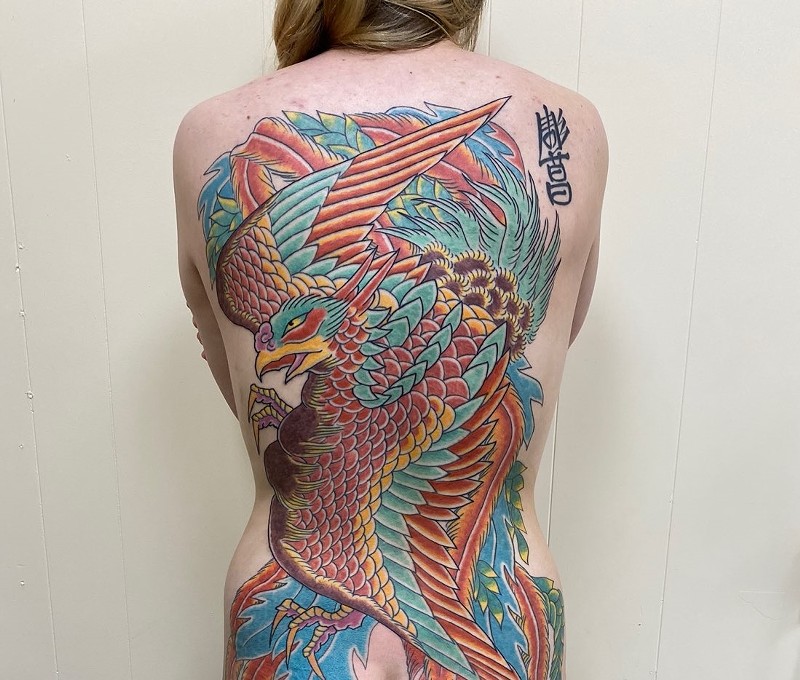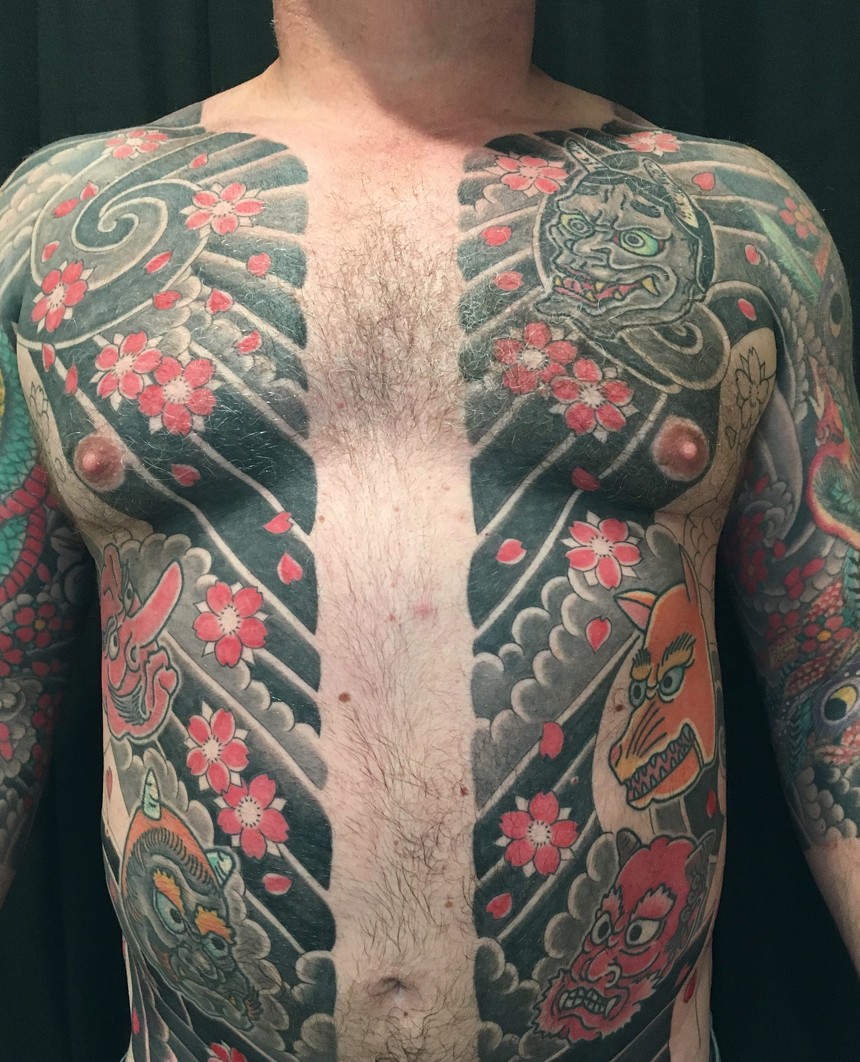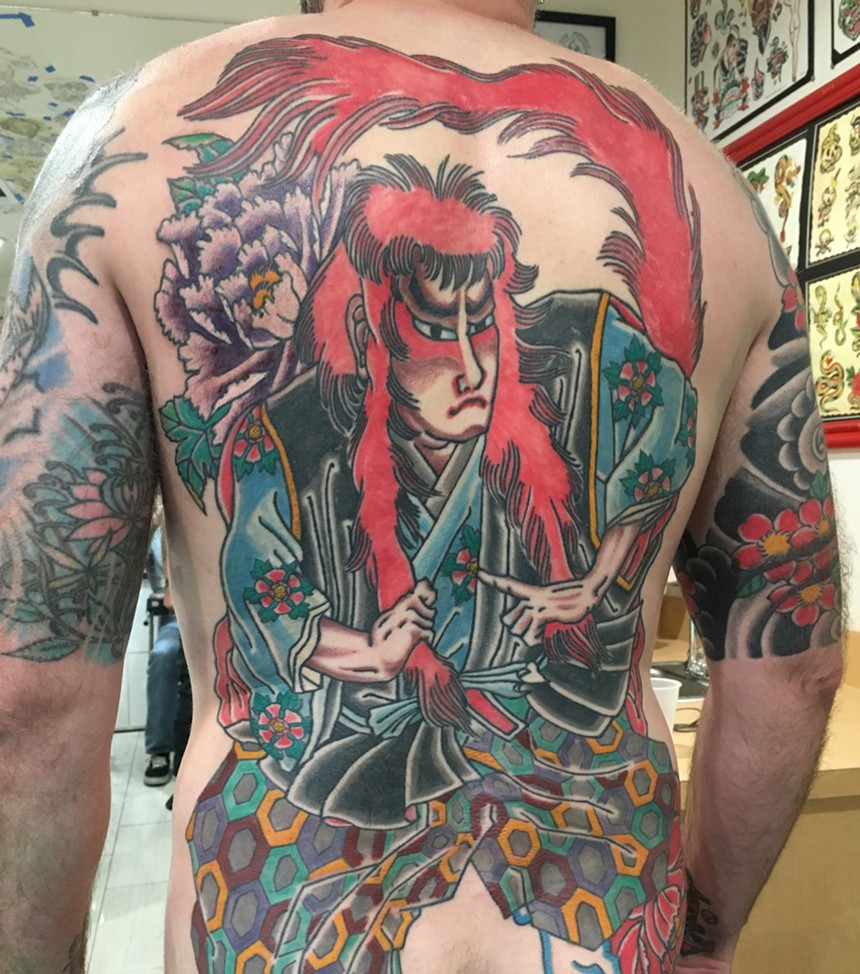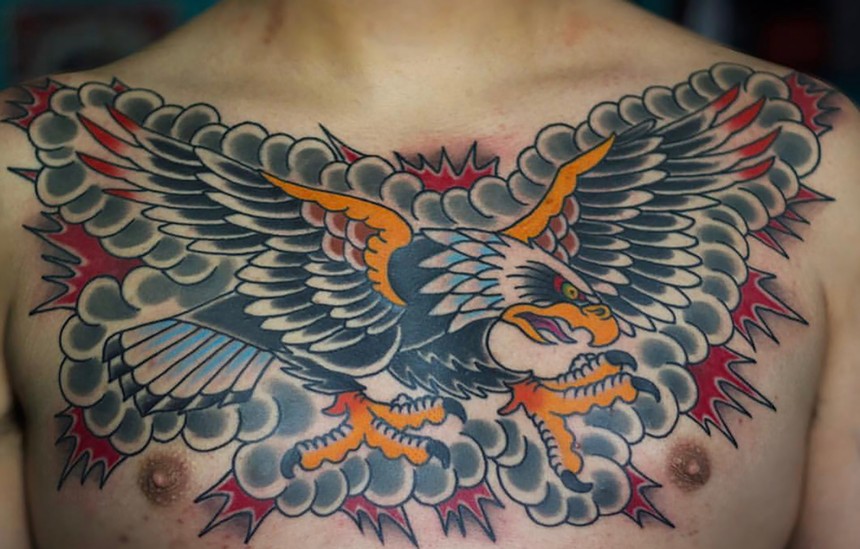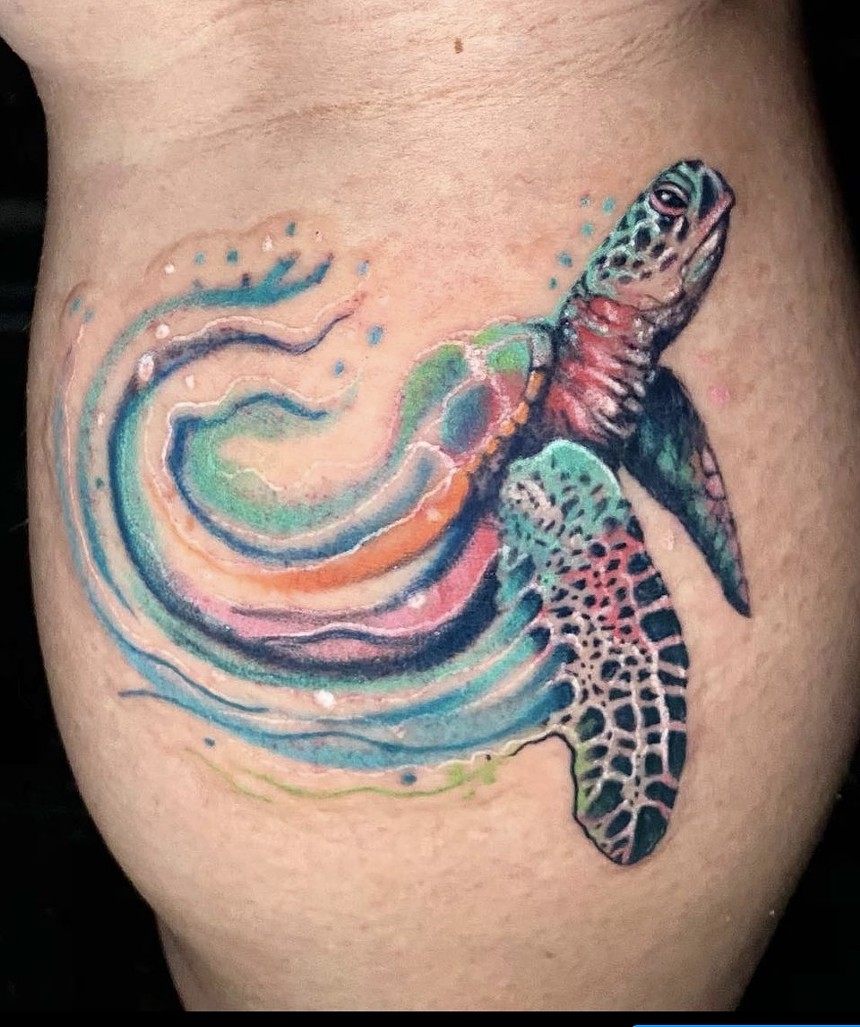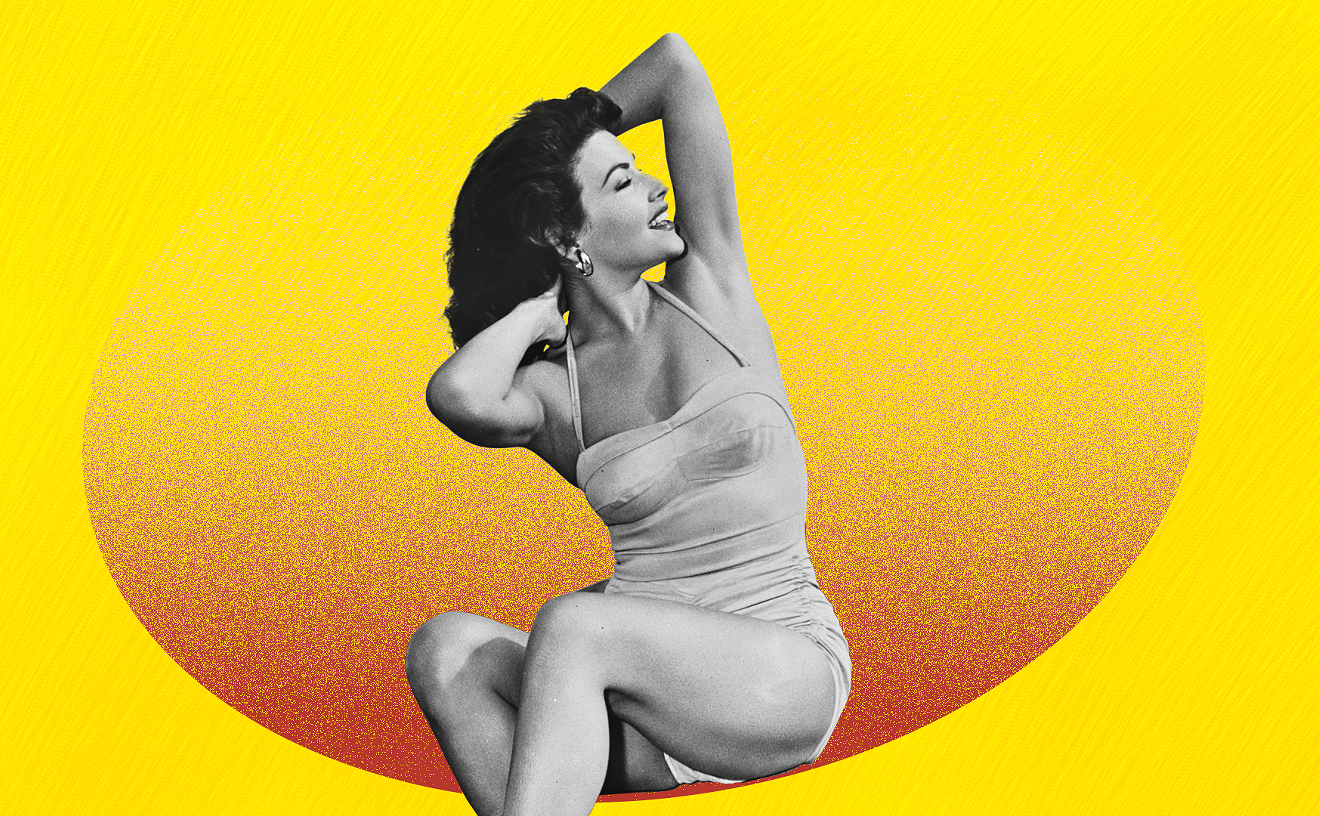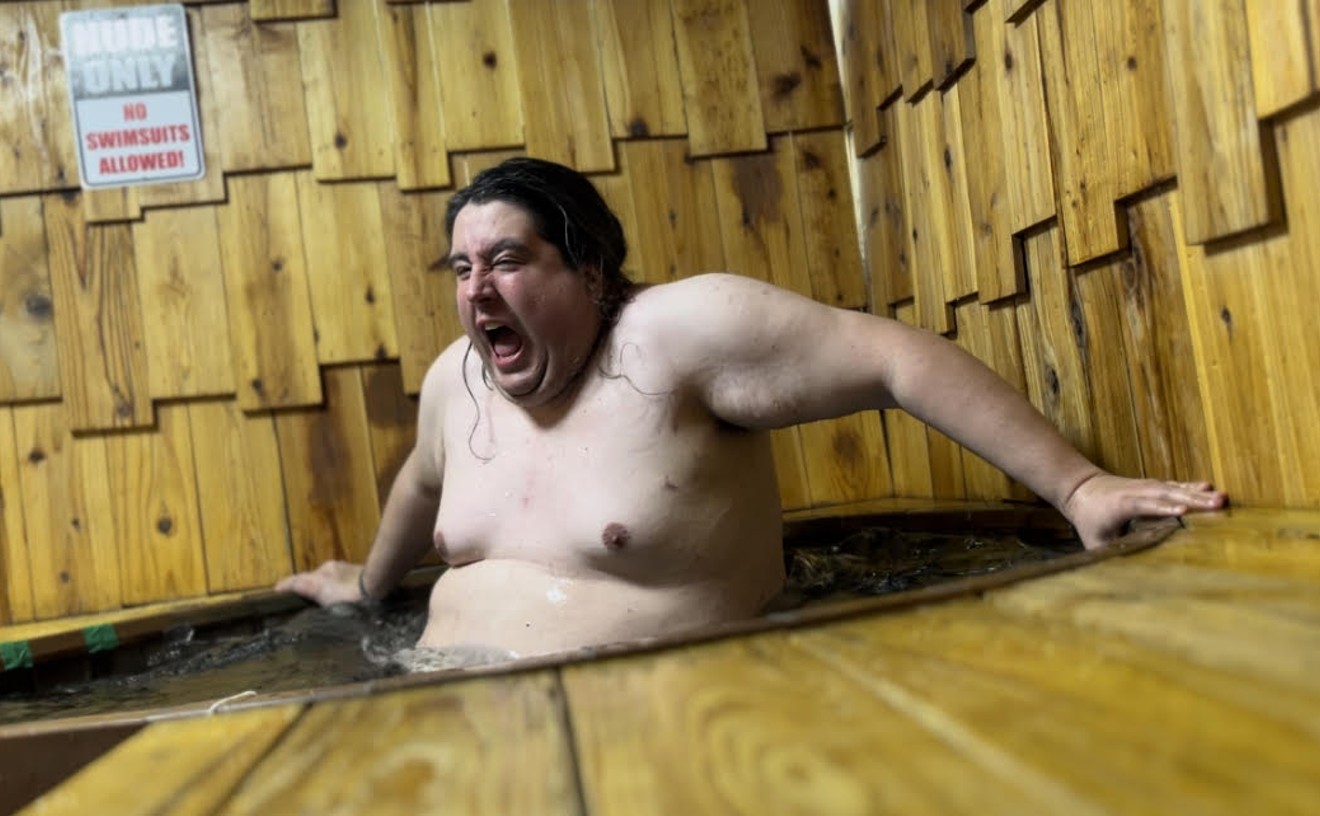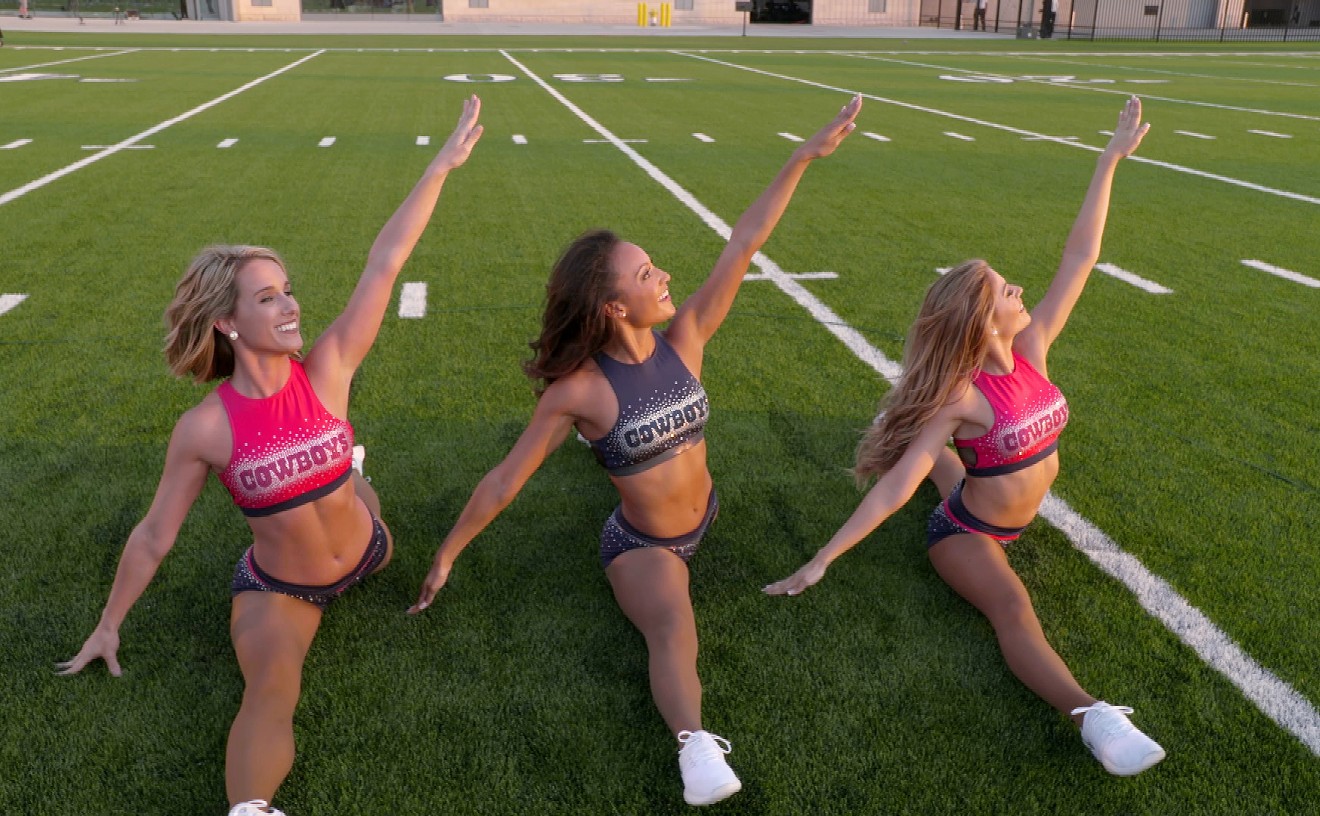In Western culture, there's long been a negative stigma associated with tattoos, but tattooing is an ancient art form with rich traditions and meanings in different cultures around the world. In 1991, when the world’s oldest human mummy was pulled from the ground, he was found sporting no fewer than 61 tattoos poked into his skin with either soot or with ink made of fire ash.
The spread of the art form into Western cultures is believed to stem from European sailors returning tattooed from the Polynesian islands back in the 1700s. The word “tattoo” comes from the Polynesian word “tatatau” or “tattau” which means to hit or strike. Over time, a set of styles formed in different parts around the world and continue to evolve, or devolve into "tramp stamps" and bar wire.
Some tattoos, however, are unarguably captivating, such as the traditional Japanese full body suit. These are best known for displaying Japanese mythology and scenes in nature to create a cohesive tattoo with deep traditional and cultural meaning. "Irezumi," the Japanese word for inserting ink and the term used to describe the full body suit, is a beautiful expression of individualism that was meant to remain hidden from the public. Tattoos were banned in Japan in different time periods during the country’s history as they were seen as being criminal.
Dallas has many tattoo artists who specialize in different tattoo styles and world traditions. Carl Hallowell, a Dallas-based tattoo artist with over 26 years of experience, added the sacred Tibori process of Japanese-style tattooing to his skillset in 2019. He also earned the Japanese tattooing title "Horisho" for his mastery in art of irezumi. The process of Tibori is an ancient Japanese technique of tattooing that requires the use of a handmade needle and no automatic tattoo gun. Hallowell uses his own force to push the ink into the dermis layer of the skin.
“In my humble opinion, the constant expression of this form seems to be ‘the essence of the world,’” Hallowell says. “By wearing this work, we emphasize our relationship with that essence.”
Hallowell describes the Japanese traditional tattoo as a depiction of true reality without distortion. The pairing of imagery is extremely important. For those interested in Japanese-style tattoos who don't understand the cultural meanings behind the imagery, an irezumi artist such as Hallowell can help create the story they'd like to tell.
The Japanese body suit is meant to flow with the body. To master the craft of perfecting this massive tattoo, an irezumi artist must first study how each body part connects and what imagery can or can't be used and where its meant to be positioned on the body.
There are over 21,000 tattoo parlors in the U.S. and that number grows each day. With the help of social media, more styles and individual creativity are being explored by tattoo artists all around the world. According to market research team Compare Camp, tattooing is the sixth fast growing American industry and generates an estimated $1.6 billion per year. Tattoos may not be for everybody, but there is far less stigma around the art form than there once was.
Texas has its own rule-breaking style of tattooing. Local legends Richard Still, Dave Lum and Chris Trevino get a lot of the credit for being some of the originators of this style. Scott Cooksey, a Dallas-based artist and owner of Lonestar Tattoo, who specializes in Texas-style tattoos, had his hands in its development and eventual perfection.
“As well as specializing in American traditional and Japanese irezumi tattooing, I often combine the two into a hybrid many call the ‘Texas style,’” Cooksey says. “Add a dash of humor and a pinch of crazy and you’re on it. Texans like big and bold and that’s the way the Texas style tattooing is.”
Bold lines, black shading and bright eye-catching colors can shape the perfect Texas-style tattoo. Where American traditional and Texas style differ are in the ideas and concepts behind the tattoos. Cooksey describes Texas style tattoos as crazier, wilder and more expressive compared to American traditional tattoos. One rule that is true to both styles is that artists make sure people can see the tattoo from across the room.
Cooksey encourages people who are interested in a Texas-style tattoo to take their time with their process.
“My best advice to someone wanting to get an American traditional, Texas-style tattoo, or irezumi for that matter, is do your homework,” Cooksey says. “Find out who is doing the specific style you want and who is doing it well. The good ones aren’t cheap and the cheap ones aren’t good — remember that.”
Another local trend is relatively new and branches away from traditional and old school tattoo styles. Watercolor tattoos are, in a sense, self-explanatory: The tattooist attempts to create a look that resembles the unique style and aesthetic of watercolor paintings. It's hard to trace who created this tattoo style but its popularity continues through clients walking into tattoo shops with watercolor tattoo pictures and painting examples they wanted to emulate.
Chubbs, a tattoo artist at Sinners Tattoo, says he did his first watercolor tattoo on the spot when a customer came in a couple of years ago. Chubbs says he loves working with color in general so he naturally gravitated toward doing watercolor tattoos as a specialty.
“I love the chaotic beauty of them,” Chubbs says. “Nothing looks perfect, it’s kind of more free expression in tattooing.”
A watercolor tattoo could be defined as a bright, vivid tattoo made up of a number of subtle color gradients and techniques that create a more gradual color fade-out, and by the use of thin outlines, if there are any.
Chubbs says that at first clients would come in looking to get small water color ideas tattooed on them. Now some of his clients are walking in for half sleeves with a watercolor look.
“I have people coming in from Colorado and all sorts of places to get watercolor tattoos,” he says.

Audio By Carbonatix
[
{
"name": "Air - MediumRectangle - Inline Content - Mobile Display Size",
"component": "18855504",
"insertPoint": "2",
"requiredCountToDisplay": "2",
"watchElement": ".fdn-content-body",
"astAdList": [
{
"adType": "rectangle",
"displayTargets": "mobile"
}
]
},{
"name": "Editor Picks",
"component": "17105533",
"insertPoint": "4",
"requiredCountToDisplay": "1",
"watchElement": ".fdn-content-body",
"astAdList": [
{
"adType": "rectangle",
"displayTargets": "desktop|tablet"
},{
"adType": "rectangle",
"displayTargets": "desktop|tablet|mobile"
}
]
},{
"name": "Inline Links",
"component": "18349797",
"insertPoint": "8th",
"startingPoint": 8,
"requiredCountToDisplay": "7",
"maxInsertions": 25
},{
"name": "Air - MediumRectangle - Combo - Inline Content",
"component": "17105532",
"insertPoint": "8th",
"startingPoint": 8,
"requiredCountToDisplay": "7",
"maxInsertions": 25,
"watchElement": ".fdn-content-body",
"astAdList": [
{
"adType": "rectangle",
"displayTargets": "desktop|tablet"
},{
"adType": "rectangle",
"displayTargets": "desktop|tablet|mobile"
}
]
},{
"name": "Inline Links",
"component": "18349797",
"insertPoint": "8th",
"startingPoint": 12,
"requiredCountToDisplay": "11",
"maxInsertions": 25
},{
"name": "Air - Leaderboard Tower - Combo - Inline Content",
"component": "17105535",
"insertPoint": "8th",
"startingPoint": 12,
"requiredCountToDisplay": "11",
"maxInsertions": 25,
"watchElement": ".fdn-content-body",
"astAdList": [
{
"adType": "leaderboardInlineContent",
"displayTargets": "desktop|tablet"
},{
"adType": "tower",
"displayTargets": "mobile"
}
]
}
]

